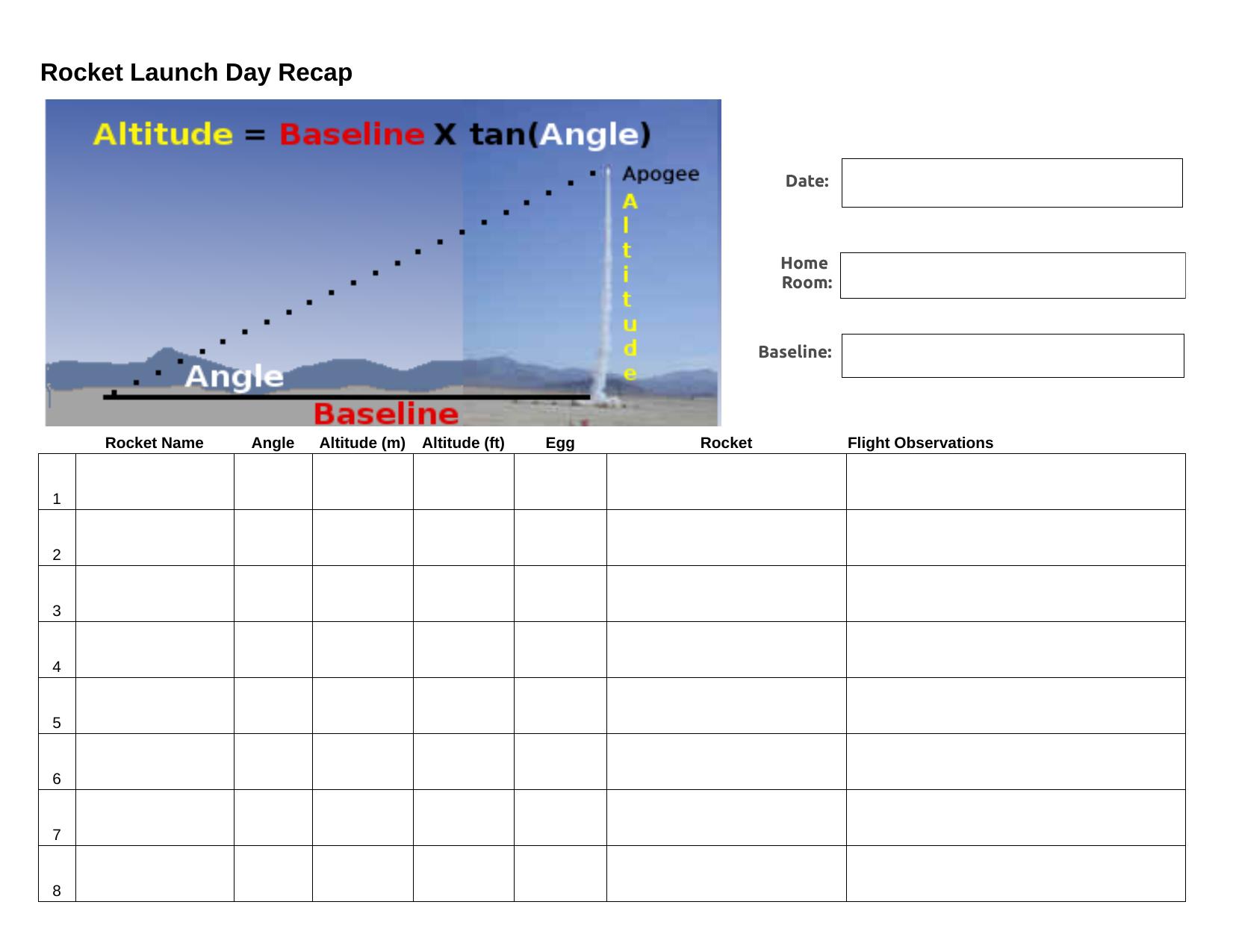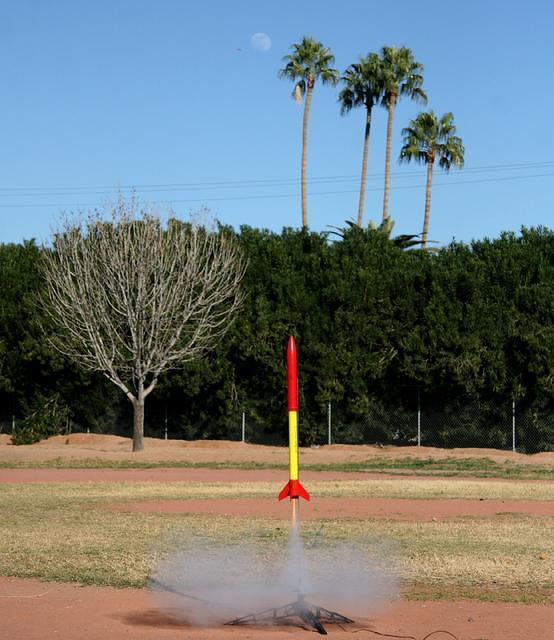Next Launch
Total Students
2,609
Total Launches
683
Eggs Survived
418 61.2%
Rockets Survived
536 78.5%
Hopi Rocketry Challenge
Rocketry at Hopi Elementary School
Rocketry at Hopi started as an idea for an activity on "Fun Friday" and grew into a much anticipated event in the 5th grade science classes. At the end of the space science unit in 5th grade science, each 5th grade class spends three class periods designing, building, and launching model rockets. Read abou t the class room activities below, or jump to a summary of all our flights, or search for the results of a launch.
Hopi Rocketry Challenge
The Mission
Each class is divided teams of four students each. Each team has two Mission Specialists and two Flight Engineers. The Flight Engineers are responsible for building the rocket for their team and the Mission Specialists design the payload section to cushion the raw quail egg during the flight.
Each team builds a rocket to carry a raw quail egg as high as possible and then return the egg unharmed to the ground.
Classroom Activities
After forming the teams and identifying the Mission Specialists and Flight Engineers for each team, we start the discussion with an introduction to the parts of a rocket and the phases of a rocket flight. In particular, we discuss
- What makes one rocket fly higher than another rocket?
- Why do rockets have fins?
- What is the lift-off weight of a rocket?
- What is the maximum lift-off weight of a rocket engine?
- What is the secret to building a rocket that flies the highest without breaking the egg?
- The Rocket Safety Code from the National Association of Rocketry (NAR)
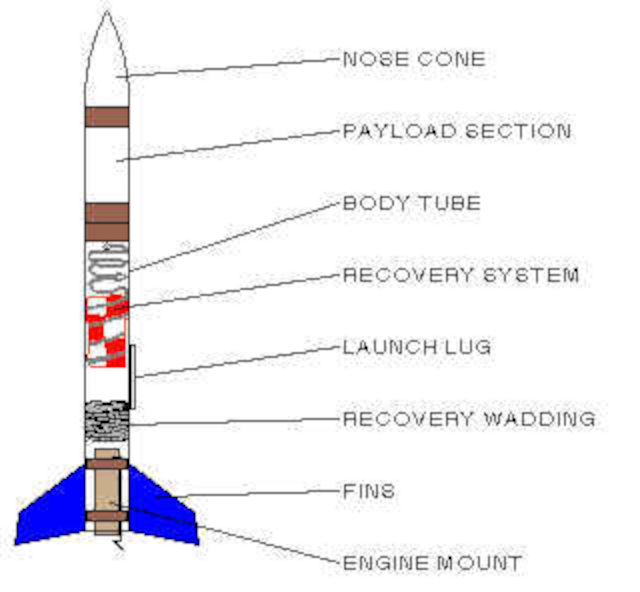
Classroom Activities
Since we are trying to make the rocket go as high as possible, we need to know what parts of the rocket effect its flight the most. Generally, a rocket will fly the highest if it flies straight as an arrow and is
very light. The fins control how straight a rocket flies, so we have to make sure that they are perpendicular
to the rocket body and are spaced evenly around the rocket body. The two Flight Engineers on each team must make sure that the fins are correctly assembled on the rocket. The Flight Engineers also have to be very careful when they glue the parts of the rocket together. If they use too much glue, then the rocket will be heavy and not flight as high. If they use to little glue, then the rocket may fall apart in flight, and the egg will certainly be scrambled! After discussing the rocket's flight, we take a little trip on a rocket to see how it flies.
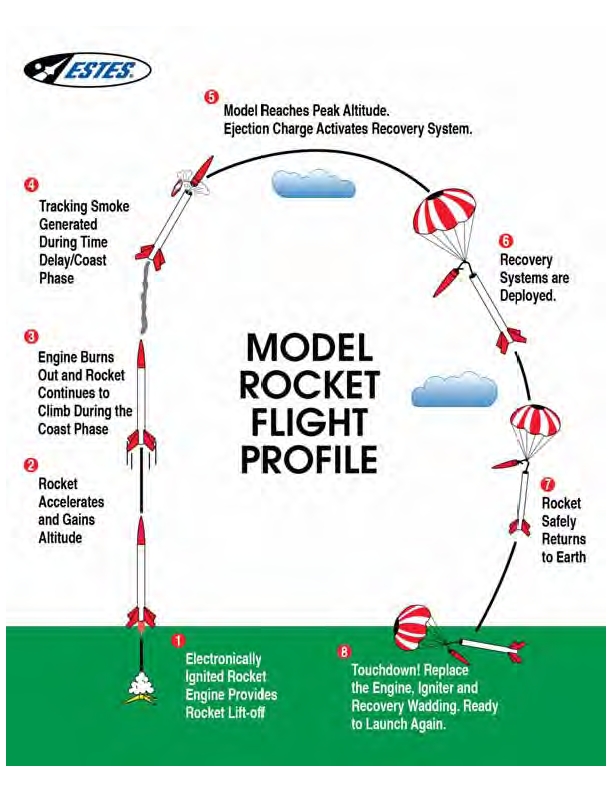
Classroom Activities
In order to control the weight of the rocket's payload, the Mission Specialists use a
Payload Calculator. The Mission Specialists use the Payload Calculator
to record the weight of all the parts of the rocket. The Mission
Specialists can change the lift-off weight of the rocket by carefully selecting the materials they use to
cushion the egg in the payload section. They determine the weight of the materials used to cushion the egg using
a balance. The Mission Specialists are responsible for building a cushion around the egg that will
protect it during the flight and for keeping the weight of the cushion as small as possible. The Mission
Specialists use a hard boiled egg as they design the cushion.
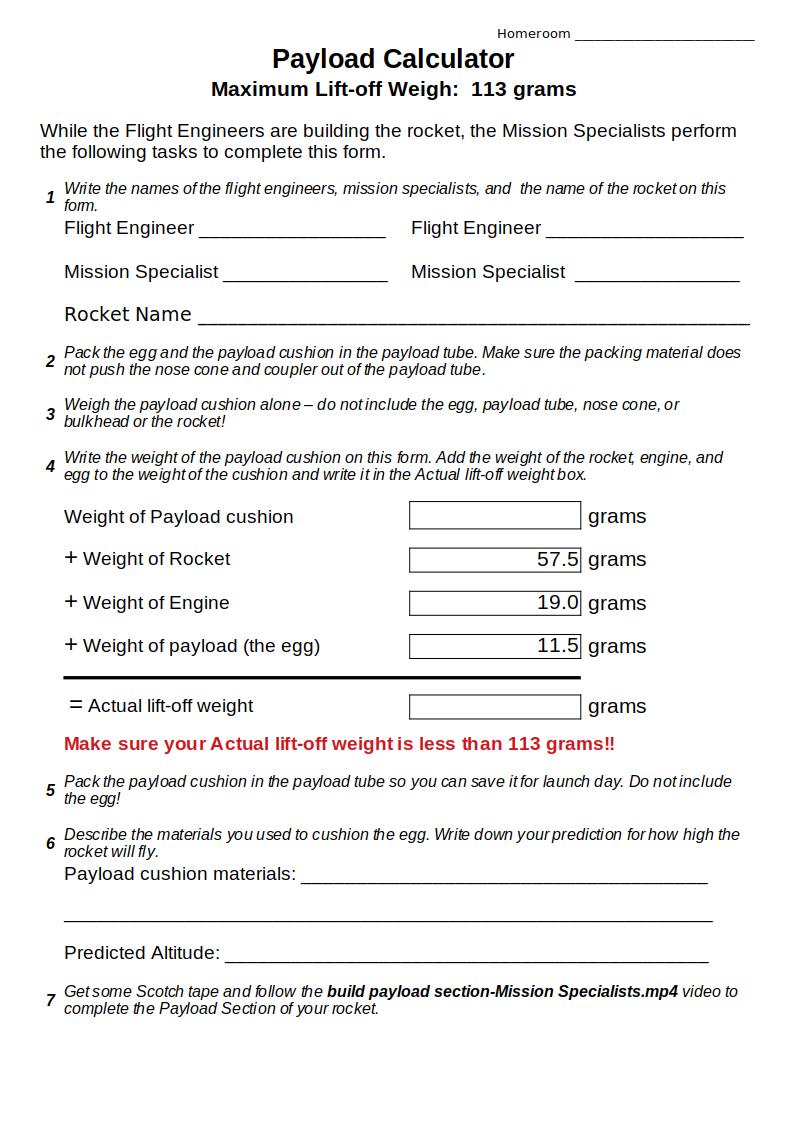
Classroom Activities
The Mission Specialists must also make sure the total lift-off weight of the rocket is less than the maximum
lift-off weight. The maximum lift-off weight is determined by the type of engine used to fly the rocket.
If the lift-off weight is greater than the maximum lift-off weight of the engine, then the rocket may not
leave the launch pad, or it may rise a few feet in the air and then turn over a crash. In order to be certain
that a rocket will fly safely, a rocket must always weigh less than the maximum lift-off weight of
the engine.

Classroom Activities
Of course, the engine used in the rocket also influences how high the rocket flies. For this mission, all the rockets use the same type of engine - a B6-4. We learn a little about different engine types, what the numbers and letters mean, and approximately how high a rocket will fly with a given engine type.
The secret to building a rocket that flies the highest without breaking the egg is to carefully follow the
assembly directions for the rocket kit.
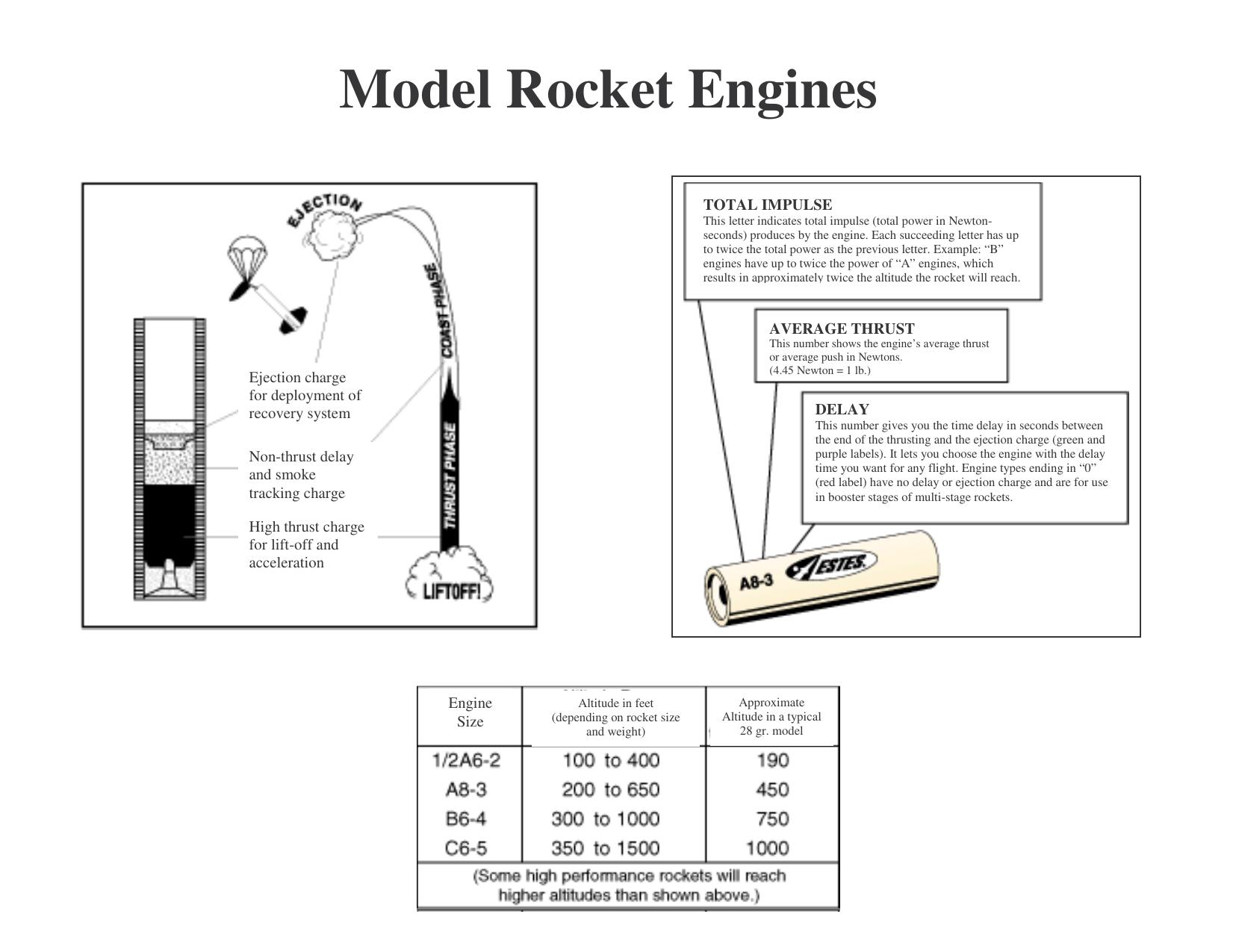
Classroom Activities
For each step in the assembly process, the Flight Engineers should
- Find all the parts for the step
- Fit the parts together without any glue to make sure they fit together as shown in the diagram
- If the pieces don't fit together, or they need to be trimmed, ask for help!
- Only apply glue as shown in the diagram
- Hold the glued pieces together for a few seconds to make sure the glue has set

Classroom Activities
Finally, there are some safety rules that all the teams must follow whenever they fly model rockets. The
National Association of Rocketry has created a set of rules called the
Model Rocket Safety Code that we follow. Every student
must show the NAR Model Rocket Safety Code to their parents and sign the Model Rocket Safety Code
form before they can participate in any of the launch activities for this mission.
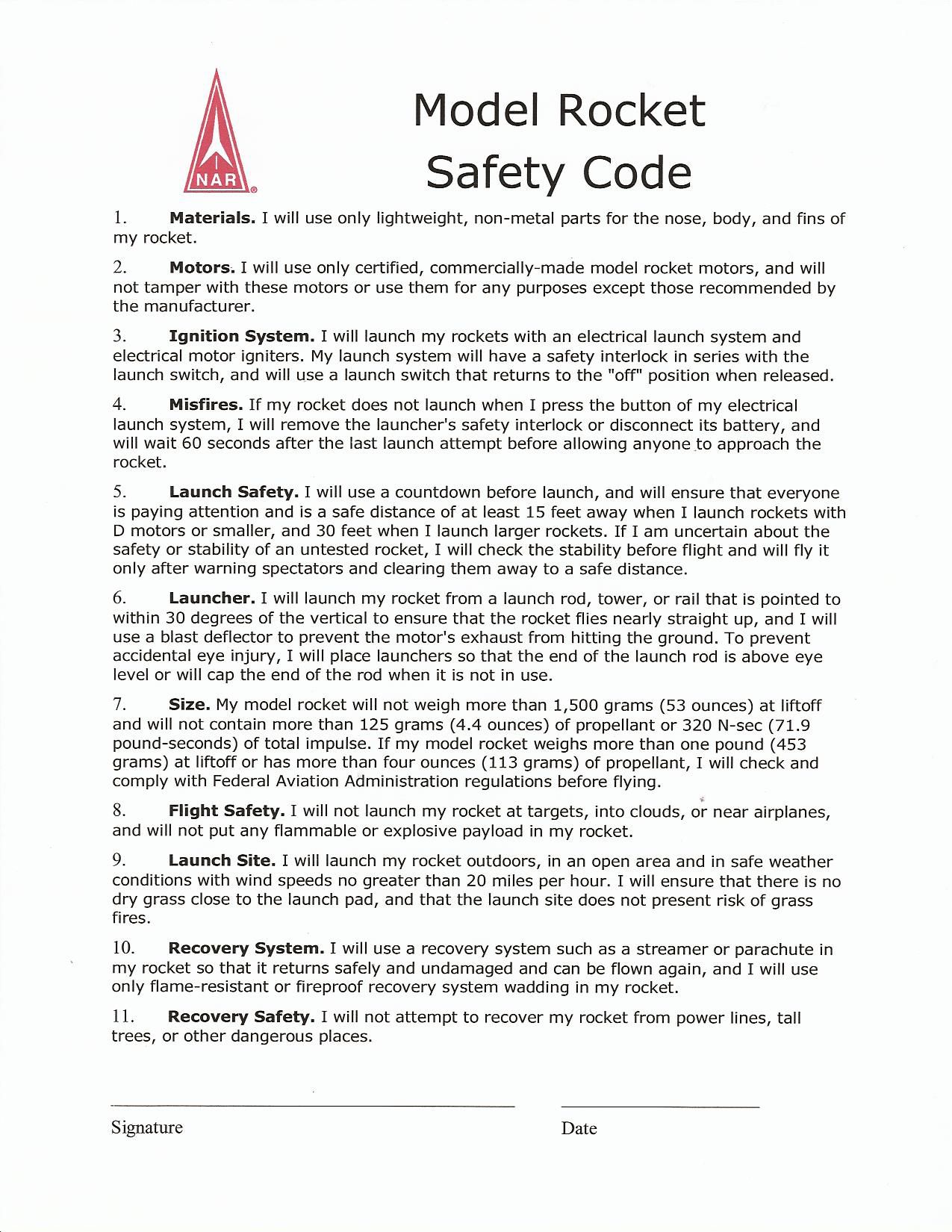
Launch Day Activites
In the third class period, we talk about
- How do we pack the parachute in the rocket?
- Safety rules for the flight range
- How do we measure the altitude of our rocket?

Launch Day Activities
Each team is given a raw quail egg to pack into the payload section of their rocket using the material they
selected in the previous class periods. Each team also completes a Flight Data Sheet for this mission. They record
the current weather conditions that might effect the flight, make a prediction for the apogee, or peak altitude,
of their rocket, and weigh their rocket one last time to make sure the rocket does not exceed the maximum lift-off weight
for the rocket engine. Once the quail egg is safely in the payload, it is time to pack the parachute and review
the launch safety procedures for the day.
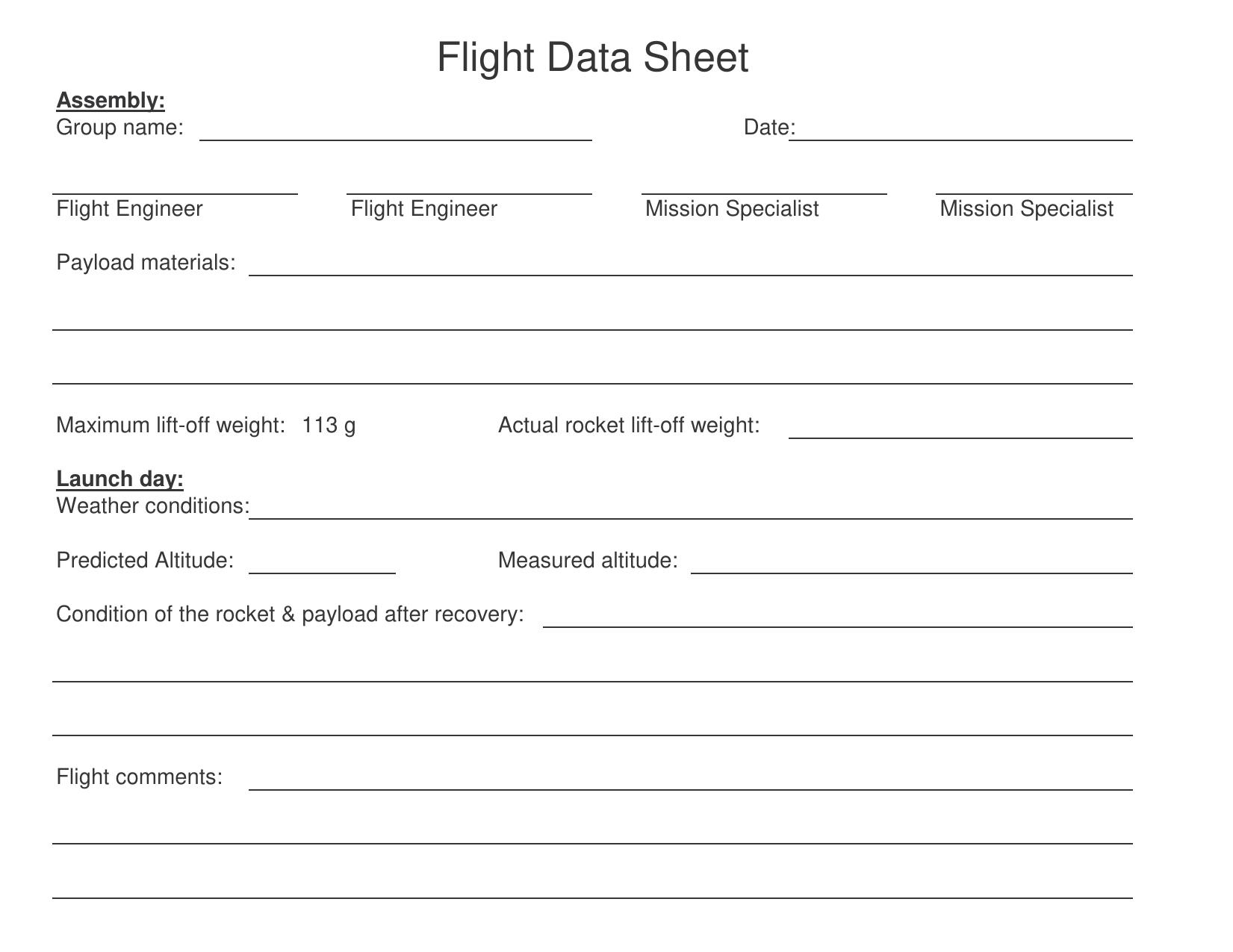
Launch Day Activites
Before the parachute is folded and put inside the rocket body, a special material called "parachute wadding"
must be inserted into the rocket body. The parachute wadding looks like single ply toilet paper, but it has a special
chemical coating that prevents it from burning. The parachute wadding is placed between the rocket engine and the
parachute to protect the parachute from the hot gases that come out of the top of the rocket engine. These gases
are called the ejection charge, and they push the parachute and nose cone out of the rocket when
the rocket reaches its peak altitude. Since the parachute is made of light weight plastic, it must be
protected from these hot gasses, or it will melt before it leaves the rocket's body. After loosely packing
six sheets of parachute wadding into the rocket's body, the Flight Engineers fold the parachute and place it
in the rocket. The nose cone and payload sections are inserted in to the rocket body, and we are ready for launch!
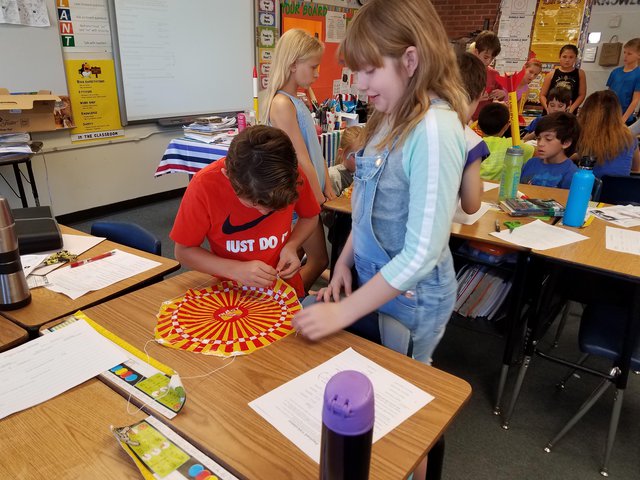
Launch Day Activities
The flight range is divided into two areas. The launch area has the launch pad and a table that the
students must stand behind in order to keep everyone a safe distance from the launch pad. Seventy-five feet
from the launch stand is the recovery area for the rocket. Before each launch, the Mission Specialists for the
team that is launching a rocket go to the recovery area and the Flight Engineers for that team stay at
the launch area. The Flight Engineers check the rocket one last time, and then hand it to a parent, who inserts
the rocket engine, places the rocket on the launch pad, and connects the ignition wires to the engine.
When the range is clear, everyone shouts out the countdown...3....2...1...Ignition! The Flight Engineers also
recover the rocket and bring it back to the launch area after the flight.
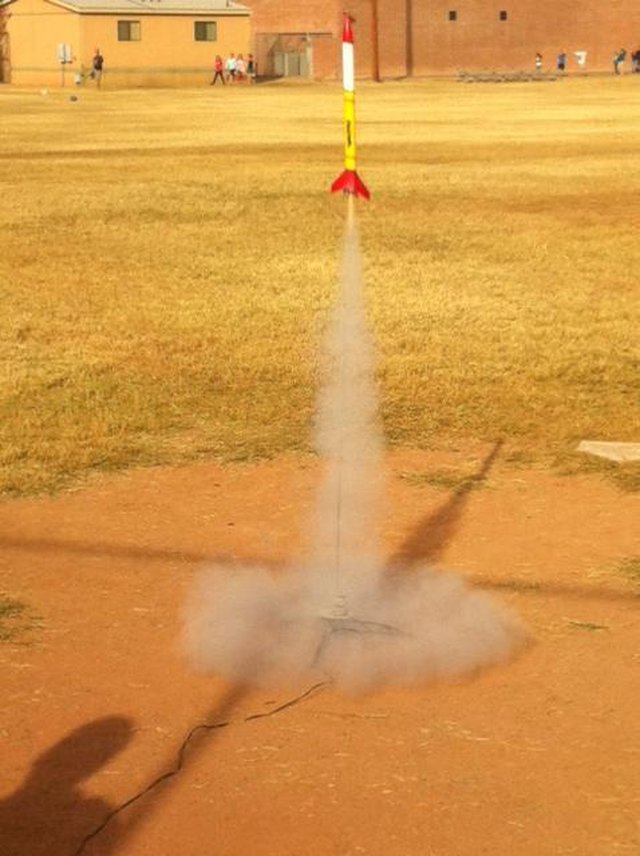
Launch Day Activites
The Mission Specialists in the recovery area, with a parent's help, measure and record the peak altitude,
or apogee, of the rocket on the team's Flight Data Sheet. The Mission Specialists, or a parent, use an
AltiTrak Altitude Finder
to measure the altitude of the rocket. They also record other information about the launch conditions,
as well as the condition of the quail egg after the rocket is recovered on the Flight Data Sheet.
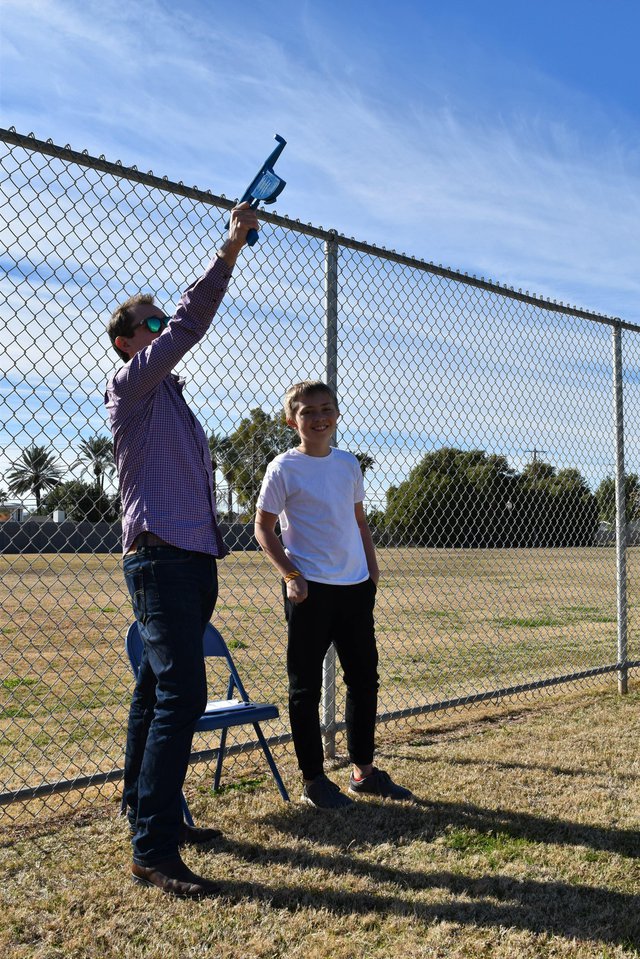
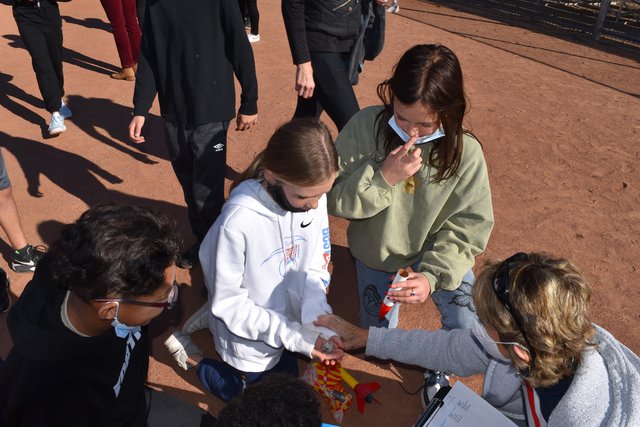
Launch Day Activities
After all the rockets are launched and recovered, the students return to the classroom and we calculate the
peak altitude of the rockets using the Altitude Calculator
and record the condition of the quail egg for each team.
